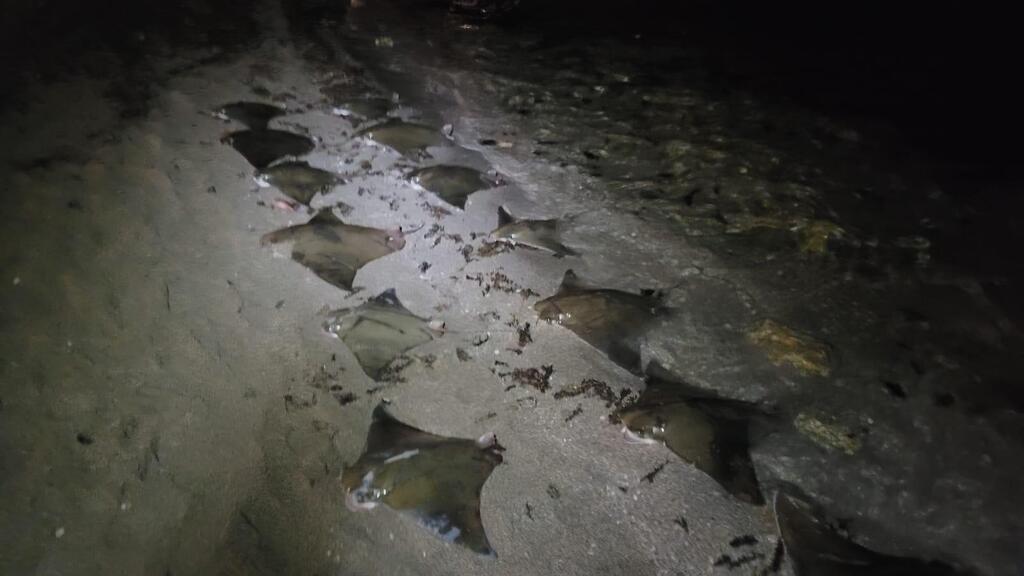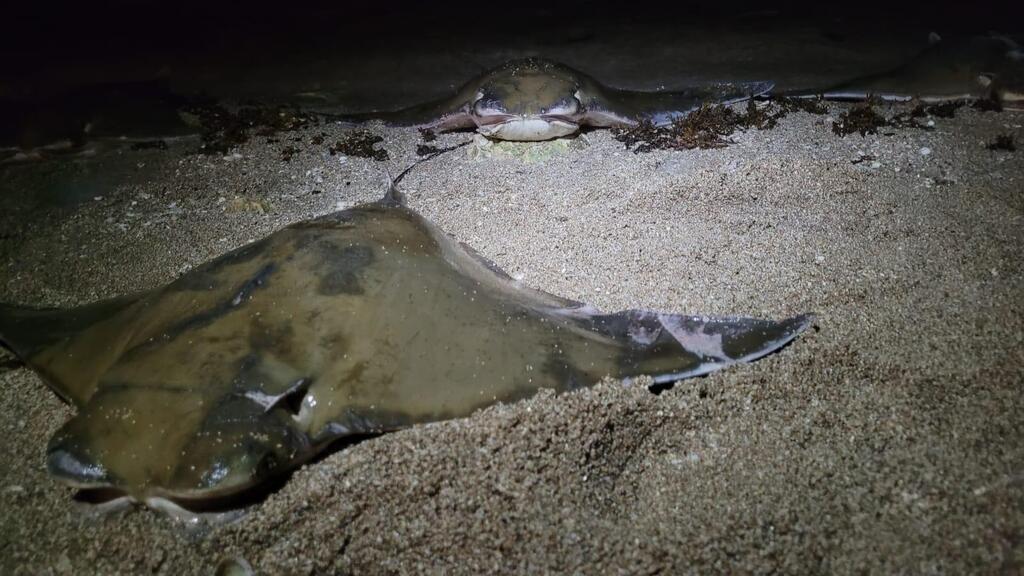Getting your Trinity Audio player ready...
Lusitanian cownose ray species were found dead and washed up on a beach
(Video: Rotem Sade)
Approximately 30 endangered lusitanian cownose rays washed up dead on a beach near the Shikmona National Park in Haifa.
Read More:
The carcasses were discovered following a report received on the SeaWatch app of the Society for the Protection of Nature in Israel (SPNI). Hadas Gann-Perkal, the coordinator of the app, noted that they were caught as bycatch in a fishing net and were discarded after being injured and killed.
Following the report, the Nature and Parks Authority inspector Rotem Sade arrived at the scene and also found young lusitanian cownose ray individuals and another species of batoid.
"Since young specimens are usually found in shallow areas, it can be assumed that the incident took place near the shore and close to the area where they were washed up," he said.
"All elasmobranchs (sharks and batoids) in Israel are protected, so it is forbidden to fish for them specifically, but because most fishing methods use non-selective equipment, meaning equipment that catches everything that comes into it indiscriminately, many fish are caught and die in vain.
"Surveys show that the percentage of bycatch by fishing nets can reach up to 60%. It is very important to document cases like this and expose the problematic issue of bycatch, but it is even more important not to accept events like this as fate and to ensure that we minimize this impact from the outset.
"Therefore, we continue to promote laws and regulations for managing fishing in Israel in order to prevent damage to the marine environment," said Gann-Perkal.
The SPNI also noted that the lusitanian cownose ray is a critically endangered species worldwide, mainly due to widespread hunting, and it only lives in the South Mediterranean Sea and West Africa.
During this time of year, hundreds and thousands of individuals can be observed gathering off Israeli shores, a phenomenon almost exclusive to this part of the Mediterranean.
Their agglomeration in large numbers makes them particularly vulnerable to fishing, as entire groups can be captured together, as happened in this case.
"The Shikmona Nature Reserve and the unique rocky beach that characterizes it attract me to the place as a photographer and nature lover," said Aviad Elmagor, who reported the incident.
"This week, while walking along the beach north of the reserve, I came across a large number of dead rays whose carcasses were washed up on the shore, apparently after being caught in fishing nets and discarded as bycatch back into the sea.
It's sad to see these beautiful marine creatures lying on the shore, like a warning sign of the environmental damage and disruption of balance resulting from uncontrolled activities."






